Manual Muscle Testing (MMT)
What is Manual Muscle Testing (MMT)?
Manual Muscle Testing (MMT) is a technique used in physical therapy and rehabilitation to assess the strength and function of individual muscles or muscle groups. It involves the application of specific resistance against the muscle’s movement to determine its ability to generate force.
Many health care principles including medical, orthopedic, chiropractor, physical therapist, rehabilitation therapist, and sports trainer use Manual Muscle Testing(MMT). Various methods of testing have relevancy in various references and are not always the same.
The most frequently held Point of view is that MMT is techniques use to evaluate the amount of maximum force generated by the muscle. Though, this is not always the situation. With giving normal innervation to muscle, maximum force can be generated and it is to a higher degree a performance of the size of that muscle. Still, every health care professional has to know how to test muscles to differentiate between nerve root, peripheral nerve, and central nervous system conditions, whatever the size of the muscle. Such tests are commonly submaximal.
Moreover, standard orthopedic and neurologic evaluation and applied kinesiology practitioners are using MMT to know what is accepted as true to be promptly neurological reflection to various tasks and treatments. Tests of the highest force are very less applicable to this use. The reason for this descriptive review is to describe a kinetic MMT and point out the aspects of muscle testing that should be defined to correctly expound research that includes a kinetic MMT.
Manual muscle testing is one type of evaluation of muscular strength that is commonly done as part of a patient’s objective evaluation and is a necessary part of the physical exam that can show detail about any neurologic defects. It is very useful in the evaluation of weakness and can be useful in knowing the difference between muscle weakness and imbalance or poor muscle endurance. It has many synonyms such as motor testing, muscle strength grading, and manual muscle testing. the strength of the muscle can be evaluated through three different techniques which are manual, functional, or mechanical. Strength is a combination of morphological and neurological factors also involving cross-sectional area of muscle and structures, musculotendinous stiffness, motor unit recruitment, motor unit synchronization, and neuromuscular inhibition
The current methods of manual muscle testing are evaluated By back to the early 1900s. In the past 1900s gravity tests were used to evaluate any damage to spinal nerve. The new technique for doing physiological assessment have standard accepted method and grading techniques that allow a medical professional to understand and communicate the findings of muscle testing.
With the use of MMT, the patient is ordered to hold the commensurate limb or proper body part to be examined at a specific level in its available range of motion, working opposite to the gravity or while the examiners give manual resistance in opposite direction to decide the grade to deliver the muscle. MMT is a vital part of a physical therapy examination and grading strength is an important skill that when done perfectly can give the rehabilitation therapist an important date that can assist him or her in planning appropriate evaluation programs, alterations, or treatments. There are decided protocols to use when doing MMT to make sure perfect results
Range of muscle work
Full range of Muscle WorK
The full range of motion suggests muscle work from a fully stretched muscle position to completely shorten that muscle length. In this type of action muscle work Concentrically and eccentrically, which means during stretched position muscle is in concentric contraction while in a shortened position much having an eccentric contraction
For our day-to-day activities full range should be a must whit using this method we can maintain the muscles in full range.
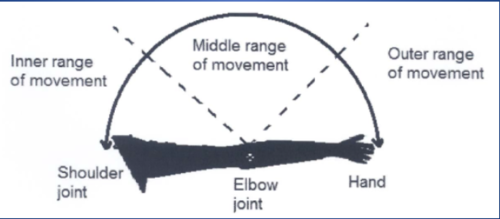
- The full range of motion is divided into 3 parts
- Outer range
- Inner Range
- Middle range
Inner Range of Muscle Work
In the inner range, the muscle is moving from the mid-contracted position to a fully stretched position. moreover, it moves from a minimal contracted range to a fully contracted muscles position
Maximum inner range motion is very tough to do because it needs a higher amount of motor unit.
The middle range of Muscle Work
In this type of muscle work, there is no fully stretched or fully contracted posture.
Muscle is moving from minimum contracted position to middle range.
We are commonly using medium muscle range in our daily activities.
In this position, muscles are at their highest strength
Muscle power, endurance, and tone get increased if we do the exercise in this position.
Outer range of Muscle Work
The outer range is very difficult to do.
In this type of range, muscles are moved from a fully lengthened position to the middle range of Muscle.
When we do this muscle movement the angle of pull is unfavorable and the energy is used to constrict the articular surface of the bone.
Moreover, gravity is also affecting this motion so that it becomes very difficult to perform
Preparation for assessing Manual Muscle Test
Before performing MMT, it is important to obtain a thorough medical history and physical examination of the patient to assess their overall health and identify any underlying conditions that may affect the accuracy of the test.
The patient should be informed about the purpose of the test and what to expect during the evaluation. They should also be instructed to wear comfortable clothing that allows for easy movement and access to the muscles being tested.
During the test, the patient should be positioned in a way that allows the evaluator to easily access the muscles being tested. The evaluator should also ensure that the patient is relaxed and not tensing their muscles during the evaluation.
It is important to use proper technique and apply consistent pressure when performing MMT to ensure accurate results and minimize the risk of injury. The evaluator should also document their findings and any relevant information about the patient’s condition or response to the test.
Overall, proper preparation and technique are essential for obtaining accurate and reliable results from MMT.
Protocols for accurately measuring MMT
an essential step you can follow for more accurate manual muscle testing outcomes:
Make sure you have complete communication with the patient and all the parts of the test and also the results you are wanted to get from that test.
Examiners should Work with the non-dominant or not injured side first and apply constant pressure throughout the whole range
Make sure your patient should breathe normally while performing the test because holding a breath can raise a forced result.
Make sure the patient is wearing loose clothing to gain a full range of movement.
the patient should be in a properly supported posture so that they can completely focus on their effort on the body part which is examined.
Therapists should make sure that they are always examined in antigravity posture first. You can look at a horizontal plan as long as muscles are very weak to test opposite gravity.
Whichever muscle is being examined, resistance should be imposed directly opposite direction of the “line of pull” of that muscle.
First, make points for the test, test every muscle that should be assessed in one position before going to another position. This decreases any energy usage during assessment and saves treatment time.
to avoid redundant complications always give necessary stabilization to irrelevant joints. For instance, shoulder stabilization will stop additional motion when the patient is opposing elbow bending or flexion.
To get the perfect results of muscle strength and any damage always examined both sides and differentiate the strength or grade of the muscles of both limbs.
These protocols are very important to get the most accurate outcomes with assessing manual muscle testing. Vice-versa, there are a few things to avoid which can badly affect outcomes.
Things not to do while assessing Manual Muscle Testing (MMT)
When you give resistance to the patient’s movement make sure you are not doing jerky movement.
In case the patient is complaining of pain and any discomfort immediately stops that movement. Do not leave any patient without treatment
Types of Manual Muscle Testing (MMT)
This classification involves everything about manual muscle testing and especially manual muscle testing by a group of muscles.
When a therapist does a manual muscle test, “resistance” always refers to a concentric force applied in the direction counter to the muscle or muscles that are contracting. There are two distinct approaches to performing manual muscle testing, according to Daniels and Worthington’s book “Muscle Assessment: Techniques of Manual Examinations and Performance Testing.”
Break Testing
In manual muscle testing, while assessing the muscles a therapist applied resistance at the end of that motion which is called a break test this means when the therapist applied pressure against the motion the patient should aim not to break the muscle’s range of motion
Active Resistance Testing
In this type of manual muscle testing, the pressure is applied throughout the preset range of that joint. without developing proper skills and practice a therapist should avoid using this technique.
The Oxford Scale for MMT
The most frequently used method of assessing muscle strength is the Oxford Scale
This technique includes assessing major muscles from the upper and lower limbs opposing the therapist’s force and grading the patient’s muscle strength on a 0 to 5 scale:
| Grades | Explanation |
| 0 | no movement |
| 1 | Flicker of contraction |
| 2 | Actively full range of motion with gravity-assisted |
| 3 | Active full range of motion opposite gravity |
| 4 | Active full range of motion with little resistance |
| 5 | Active full range of motion with strong resistance |
Modified oxford scale
| Grade | Explanation |
| 0 | no contraction |
| 1 | A little bit of contraction |
| 2- | partial range of motion with gravity eliminated |
| 2+ | full range of motion with resistance, gravity eliminated |
| 3- | partial range of motion opposite to gravity |
| 3+ | hold the movement opposite to gravity with little resistance |
| 4 | full ROM against gravity with medium resistance |
| 5 | full ROM against gravity with maximum resistance |
Kendal scale
| Kendall scale | Explanation |
| None | no visible or palpable contraction |
| Trace | clearly visible contraction |
| Poor | full range of motion with gravity eliminated |
| Fair | full range of motion with opposing gravity |
| Good | full range of motion with opposing gravity , medium resistance |
| Normal | full range of motion with opposing gravity, medium resistance |
MRC scale
| MRC scale | Explanation |
| 0 | No visible or Palpable contraction |
| 1 | Visible or Palpable Contraction |
| 2 | Full ROM gravity eliminated |
| 3 | Full ROM against gravity |
| 4 | Full ROM against Gravity, miduim Resistance |
| 5 | Full ROM against Gravity, Maximum Resistance |
Generally assessed muscles involved the shoulder abductors, elbow flexors, elbow extensors, wrist extensors, finger flexors, hand intrinsics, hip flexors, knee extensors, dorsiflexion, great toe extensor, and plantar flexors.
To assess very necessary spinal nerve roots examiners generally go with these muscles. For instance, the therapist examined C5 to the T1 nerve root to check the strength of the elbow flexors, elbow extensors, wrist extensors, finger flexors, and hand intrinsics.
There are some factors that affect the result of the Oxford scale. That involves
Poor performance conformity;
the differentiation among grades 3 and 4 is not important to same just as the differences among grades 4 and 5
There are changes in results due to fatigue of the assessing muscle
We can only evaluate muscle during concentric contraction only
We can not imply this scale to every patient in the clinical set-up because those patients who are assessed by physiotherapist does not have the full range of motion due to some underlying pathology
Just because of these reasons therapists usually go with the modified Oxford Scale
How to Perform Manual Muscle Testing (MMT)?
This is a method used by healthcare professionals to evaluate the strength and function of a patient’s muscles. It involves applying resistance to a muscle group while the patient contracts the muscle. Here are the steps to perform manual muscle testing:
1. Position the patient: The patient should be positioned comfortably, with the muscle group you want to test in a relaxed position. For example, if you want to test the strength of the biceps muscle, the patient should have their arm extended and relaxed.
2. Explain the procedure: Explain to the patient what you will be doing and what you will be looking for. Let them know that you will be applying resistance while they contract their muscle.
3. Test for gravity resistance: Begin by testing for gravity resistance. This involves asking the patient to move their limb against gravity. For example, if you want to test the strength of the quadriceps muscle, ask the patient to straighten their leg while lying on their back. If they can do this without difficulty, move on to step 4.
4. Apply resistance: Apply resistance to the muscle group being tested by placing your hand on the distal end of the limb (the part furthest from the body) and asking the patient to contract their muscle against your hand. Apply enough resistance to feel whether or not the muscle is strong enough to overcome it.
5. Grade the strength: Use a grading system to assess the strength of the muscle being tested. The grading system ranges from 0-5, with 0 indicating no movement and 5 indicating normal strength.
6. Repeat the test: Repeat the test several times to ensure accuracy. If the patient is fatigued, allow them to rest before testing again.
7. Document the results: Record the muscle group tested, the strength grade, and any notes on the patient’s ability to perform the test.
Manual muscle testing is a valuable tool in evaluating a patient’s muscle strength and function. By following these steps, healthcare professionals can accurately assess a patient’s strengths and develop an appropriate treatment plan.
Benefits of the Manual Muscle Testing (MMT)
Manual muscle testing (MMT) provides several benefits to both healthcare professionals and patients. Some of these benefits include:
1. Accurate diagnosis: MMT allows healthcare professionals to accurately diagnose muscle weakness or imbalances in patients. This helps in developing an appropriate treatment plan that addresses the root cause of the problem.
2. Individualized treatment: The results of MMT can help healthcare professionals develop a customized treatment plan that addresses the specific needs of each patient. This ensures that patients receive personalized care that is tailored to their unique condition.
3. Objective assessment: MMT provides an objective way to assess a patient’s muscle strength and function. This helps to eliminate any biases that may arise from subjective assessments.
4. Monitoring progress: MMT can monitor a patient’s progress over time. This allows healthcare professionals to adjust the treatment plan as needed to ensure that the patient is making progress toward their goals.
5. Improved outcomes: By accurately assessing a patient’s muscle strength and function, healthcare professionals can develop a treatment plan that addresses the underlying issues. This can lead to improved outcomes and a better quality of life for patients.
The principles of use of MMT
The principles of use of MMT include:
1. Consistency: MMT should be performed consistently by the examiner to ensure accurate and reliable results. This includes using the same grading scale, applying force in the same manner, and testing the same muscles in the same order.
2. Standardization: While there is no standardized protocol for MMT, healthcare professionals should use established guidelines and techniques to ensure consistency and accuracy. This includes using specific testing positions, stabilizing the patient’s body, and avoiding compensatory movements.
3. Patient cooperation: Patients should be instructed to relax and cooperate during MMT to ensure accurate results. They should also be informed of the purpose of the test and any discomfort or risks involved.
4. Examiner experience: MMT requires skill and experience on the part of the examiner to accurately interpret the patient’s response. Healthcare professionals should receive training in MMT and practice regularly to maintain proficiency.
5. Interpretation: The results of MMT should be interpreted in the context of the patient’s overall health and function. Healthcare professionals should consider other factors such as joint mobility, flexibility, and pain when interpreting MMT results.
Overall, the principles of the use of MMT emphasize consistency, standardization, patient cooperation, examiner experience, and accurate interpretation of results. By following these principles, healthcare professionals can obtain reliable and useful information about a patient’s muscle strength and function.
Disadvantages of the use of MMT
While manual muscle testing (MMT) has several benefits, there are also some disadvantages that healthcare professionals should be aware of. These include:
1. Inconsistent results: MMT relies on the examiner’s subjective assessment of the patient’s muscle strength. This can lead to inconsistent results, as different examiners may interpret the patient’s strength differently.
2. Limited scope: MMT only assesses a patient’s muscle strength and function. It does not provide information about other aspects of their health, such as joint mobility or flexibility.
3. Lack of standardization: There is no standardized protocol for MMT, which can lead to variability in how it is performed. This can make it difficult to compare results across different patients or examiners.
4. Risk of injury: MMT involves applying force to a patient’s muscles, which can be uncomfortable or even painful for some patients. There is also a risk of injury if too much force is applied.
5. Limited applicability: MMT may not be appropriate for all patients, particularly those with certain medical conditions or injuries. For example, patients with severe pain or inflammation may not be able to tolerate the testing.
In conclusion, while MMT can be a valuable tool for healthcare professionals, it is important to be aware of its limitations and potential drawbacks. Healthcare professionals should use MMT in conjunction with other assessment methods to obtain a comprehensive understanding of a patient’s health and function.
Precautions for MMT
During MMT, it is important for healthcare professionals to take necessary precautions to ensure the safety and comfort of the patient. These precautions may include:
1. Proper positioning: The patient should be positioned in a comfortable and stable position to prevent any unnecessary movement or injury.
2. Communication: The healthcare professional should communicate clearly with the patient throughout the evaluation, explaining the procedure and providing clear instructions.
3. Gradual resistance: The resistance applied should be gradually increased to prevent sudden or excessive strain on the muscle.
4. Observation: The healthcare professional should observe the patient’s response to the resistance and adjust accordingly to prevent injury.
5. Patient feedback: The patient should be encouraged to provide feedback on their level of comfort and any discomfort or pain they may experience during the evaluation.
6. Use of appropriate equipment: The healthcare professional should use appropriate equipment, such as straps or supports, to ensure the safety and stability of the patient during the evaluation.
By taking these necessary precautions, healthcare professionals can ensure a safe and effective MMT evaluation for their patients.
Limitations of Manual Muscle Testing (MMT)
Even though the MMT grades are still very useful in clinical practice because of their lower cost and quick results, however, many restrictions must be known before assessing patients:
- The first limit is that the MMT scale varies from person to person so the score relies on the clinician’s judgment.
- The second limit of the MMT scale is that it can not detect differences between a small amount of muscle strength. This is mainly due to the stepwise plan of the scale and has inspired the growth of other scales that have some more diagnostic levels.
- Manual muscle testing not being able to identify clinically significant differences in muscle strength.
MMT Grades were primarily developed for assessments of strength corrected in patients who are recovering from muscular dystrophies and paralytic disorders. Therefore, custom rather than clear scientific reasoning is likely to be the explanation for why MMT is used in a variety of clinical contexts. Many physicians (and insurers) choose to assess strength with more objective, sensitive methods, such as with portable dynamometers, due to the subjectivity and claimed inaccuracy of MMT.
Summary
Manual muscle testing is a method used by healthcare professionals to evaluate the strength and function of muscles in the body. It involves applying resistance to specific muscle groups while the patient performs a movement or holds a position. The results of the test can help determine the extent of muscle weakness or dysfunction, guide treatment plans, and monitor progress over time.
FAQ
How therapist evaluate a patient’s MMT?
For every testing muscle, the examiner should stand nearby the tested extremity and the patient should sit in which he can give the full range of motion of that joint. The movement should be antigravity. The first examiner shows the procedure and then asks the patient to do the same movement
How often should manual muscle testing be performed?
The frequency of manual muscle testing will depend on the patient’s condition and treatment plan. It may be performed at regular intervals to monitor progress and adjust treatment as needed
How is manual muscle testing performed?
Manual muscle testing involves applying resistance to specific muscle groups while the patient performs a movement or holds a position. The healthcare professional will grade the strength of the muscle based on the amount of resistance the patient can overcome.
What conditions can be evaluated with manual muscle testing?
Manual muscle testing can be used to evaluate a wide range of conditions that affect muscle strength and function, including neurological disorders, musculoskeletal injuries, and chronic illnesses.


![INTERFERENTIAL THERAPY [IFT or IFC ]:](https://mobilephysiotherapyclinic.in/wp-content/uploads/2021/08/interferential-therapy.webp)
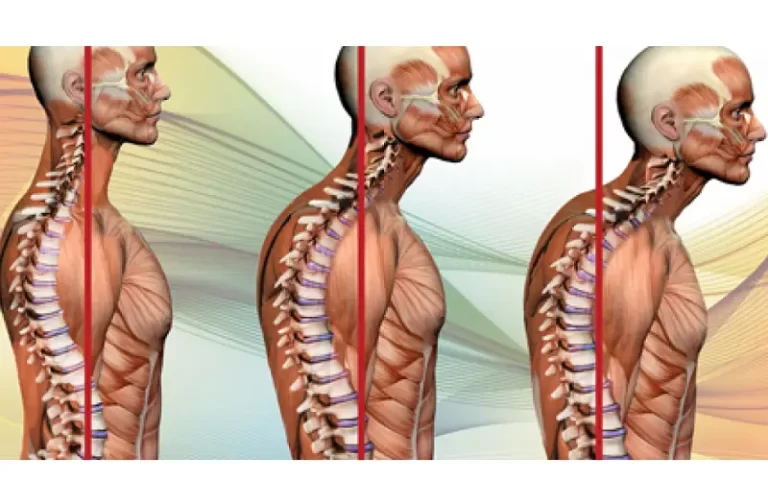
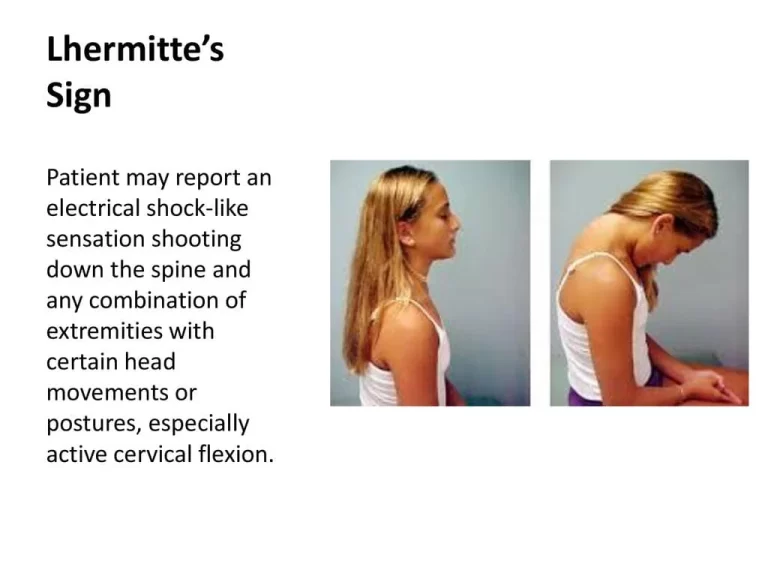

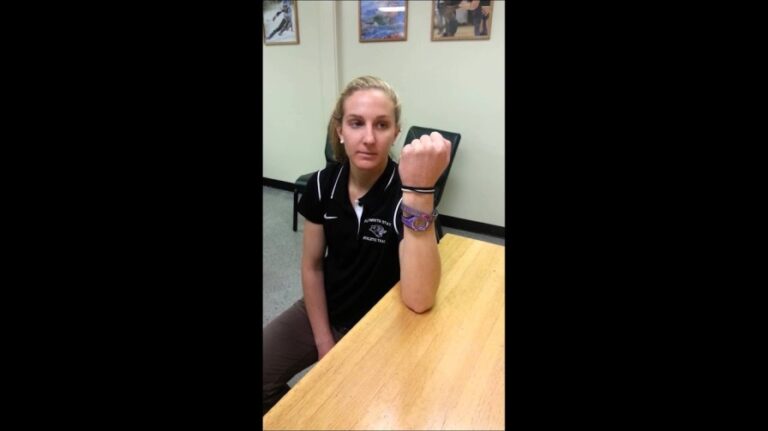
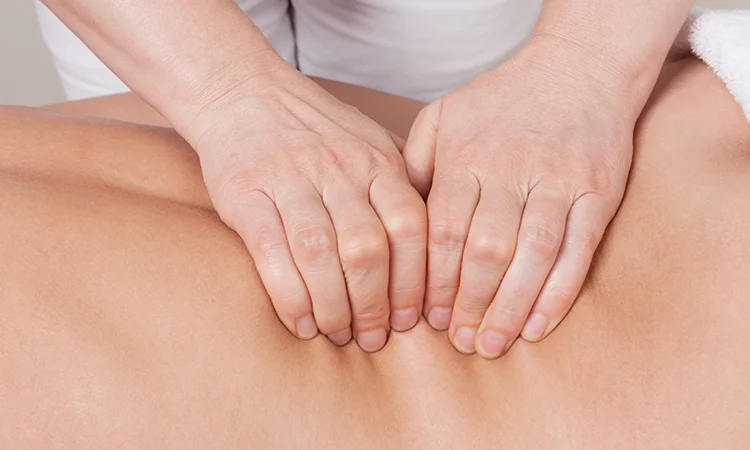
3 Comments